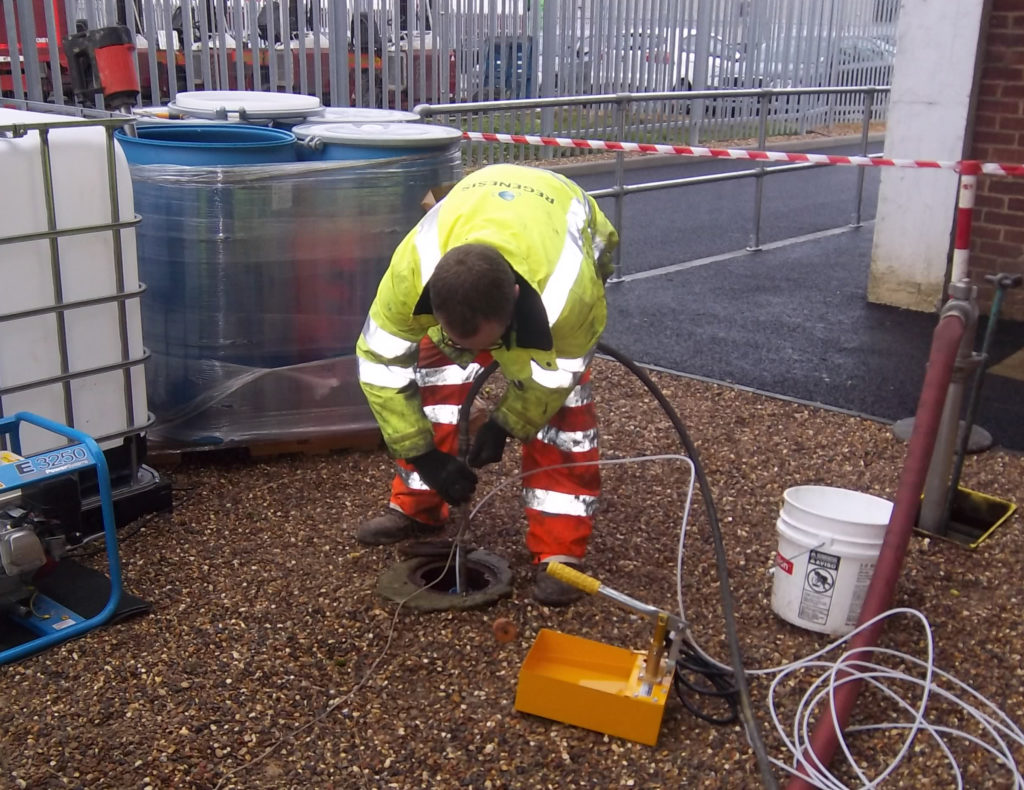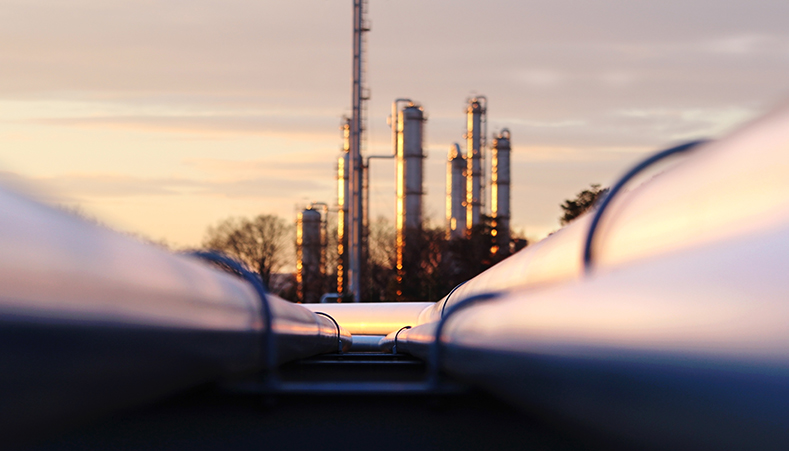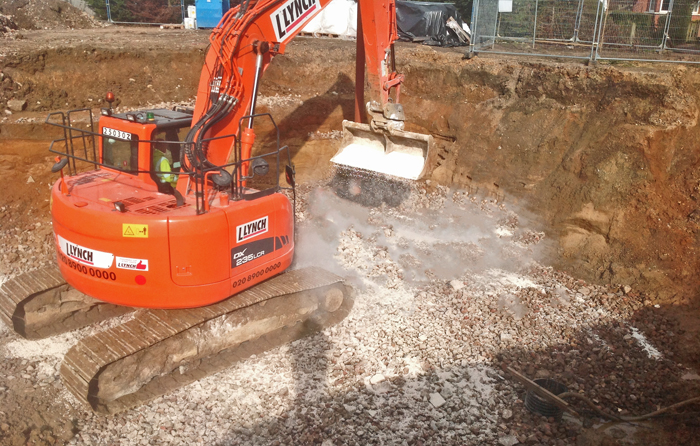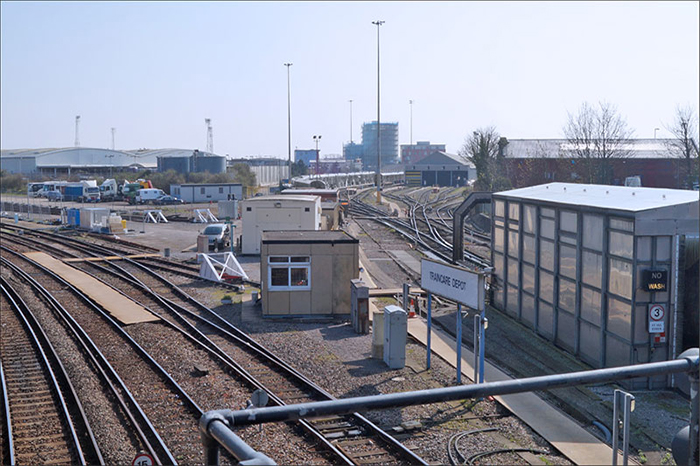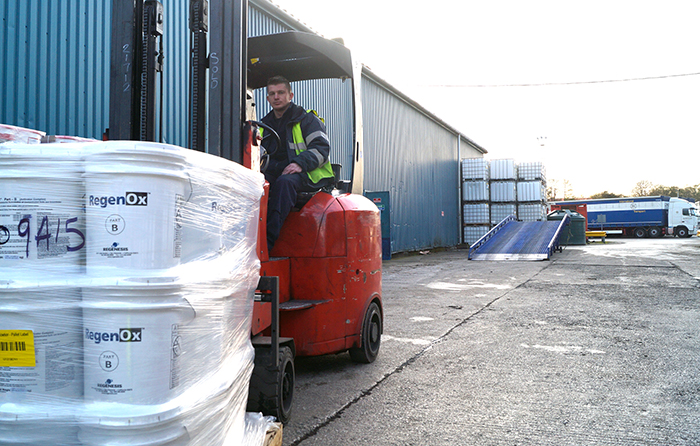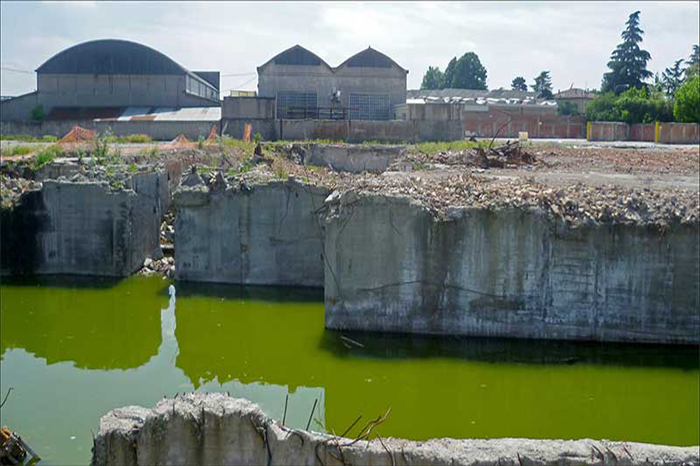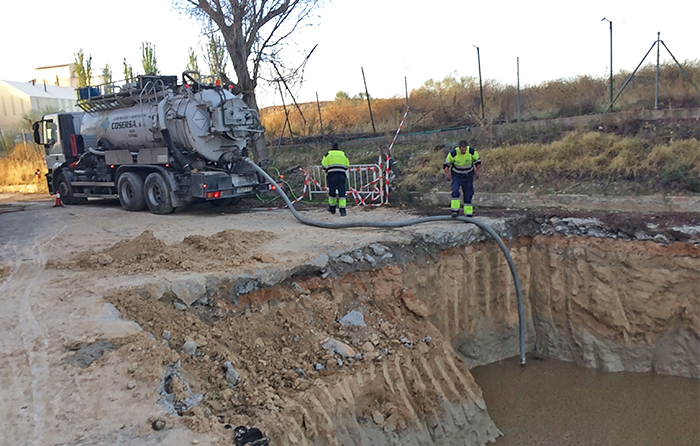In Situ treatment of toluene in groundwater, Helsingborg, Sweden
Working with multiple stakeholders to complete chemical oxidation and enhanced aerobic bioremediation works
Summary
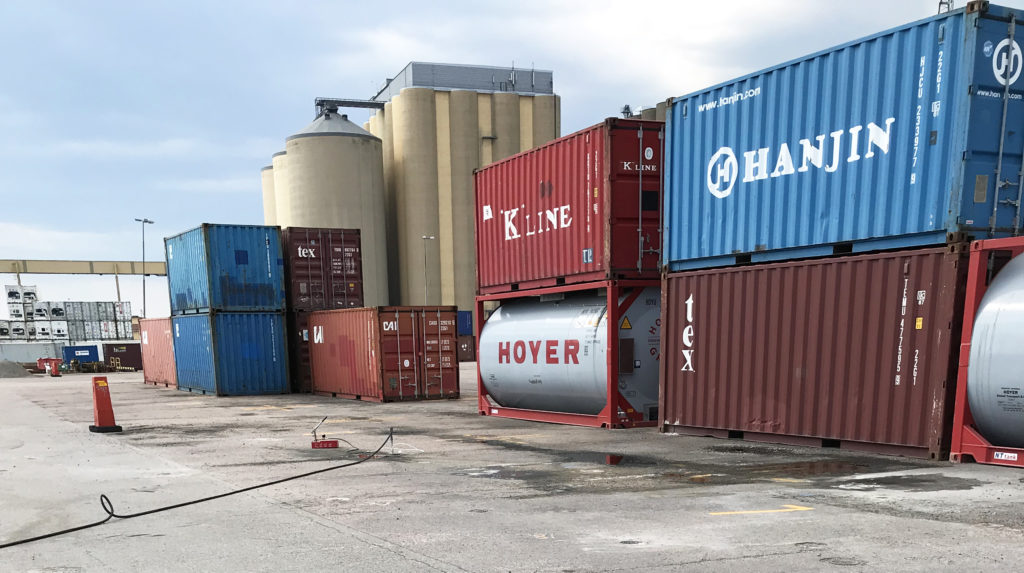
Multiple historic leakages from stored chemicals on an industrial site led to hydrocarbon contamination of the underlying groundwater, predominantly with toluene. Multiple site investigations indicated that the plume had migrated beyond the site boundary and into land owned by the neighbouring harbour authorities. An initial treatment comprised a pump and treat system which had successfully recovered 14m3 of toluene. However, the contaminant concentrations exceeded the legal limits for less sensitive or industrial land use (Swedish MKM values). Therefore, additional remediation phases were required to address the residual dissolved phase. An in situ remedial approach was chosen, using RegenOx and ORC Advanced.
Treatment
Access for the injection works was limited to two areas: one on the original industrial site, and the other in the harbour downgradient. Both areas comprised operation industrial facilities and were separated by a public road and a railway line associated with the harbour.
Initial pilot trials were completed to assess which treatment options would be most effective for the site. The results demonstrated that RegenOx was the most suitable oxidant to address the elevated sorbed-phase and high concentrations of dissolved phase contamination. In the full-scale works, RegenOx was combined with ORC Advanced. ORC Advanced provides a constant supply of dissolved oxygen to enhance aerobic biodegradation, in order to further reduce dissolved phase contaminant concentrations below the target criteria.
What’s Special?
- Pilot trials were used to determine the best remediation options for full-scale works.
- Engagement with multiple stakeholders to complete remediation of a toluene plume extending over several site boundaries.
- In Situ injection works were completed on two separate industrial facilities without disturbance to their operations.
Integrated in situ remediation of honing oil in a chalk aquifer, UK
Summary
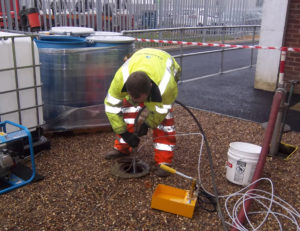
At an active factory, the spillage of ‘honing oil’, a heavy oil used as a lubricant in metal machining, occurred in the oil recovery plant on the side of the main building. The oil infiltrated the vadose zone and entered the groundwater via fractures in the weathered chalk under the site. This resulted in high levels of dissolved phase contamination and some Light Non Aqueous Phase Liquid (LNAPL) on the ground. The contamination posed a potential offsite liability for the site owner and so it was determined that active remediation should be voluntarily completed.
Treatment
REGENESIS employed a sequential remedial approach:
Enhanced vacuum extraction of the LNAPL
- To avoid the installation of a pump and treat system on the busy site, 3 mobilisations of a vacuum tanker was used to provide total fluids removal.
- Recovery was enhanced through multiple injections of PetroCleanze, an inorganic, oxidative surfactant.
- This temporarily promoted rapid desorption of the heavy oils adsorbed to the bedrock within the ‘smear zone’.
- By desorbing this contaminant mass, the vacuum extraction was able to remove more mass, shortening the remedial programme.
- This depleted the contaminant mass on the soils, reducing the potential ‘rebound’ due to desorption.
In Situ Chemical Oxidation (ISCO)
- ISCO was completed at the downgradient edge of the treatment area to target high levels of dissolved phase contamination and prevent egress of any contamination mobilized during the PetroCleanze treatment.
- This was completed using RegenOx, which is alkaline and suitable for use in calcareous formations.
- ISCO was also used across the treatment area following the last enhanced vacuum extraction event, in order to target the residual high levels of dissolved phase contamination prior to bioremediation.
Enhanced Aerobic Biological Degradation
- ORC Advanced was injected with the RegenOx in order to create highly aerobic conditions, increasing the biomass of microbes that would aerobically degrade the residual dissolved phase contamination.
- This single application provides a controlled release of oxygen into the groundwater for up to 12 months.
- This treatment targeted the dissolved phase contamination in the mobile groundwater in the chalk fractures and also provided prevention of rebound due to back-diffusion from the contamination located in the primary porosity of the chalk matrix.
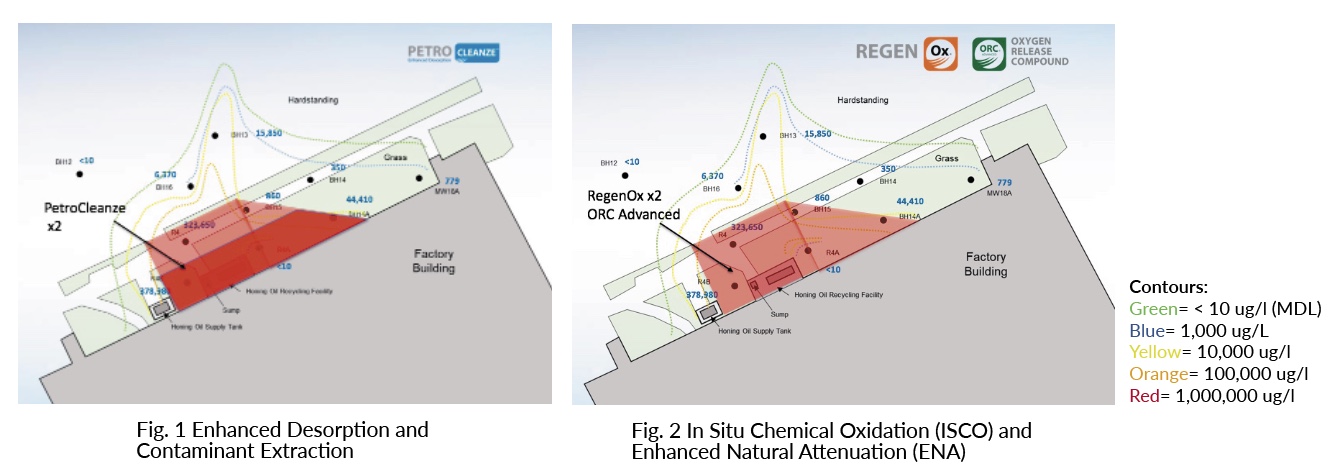
Results
The treatment produced a rapid reduction in the contaminant mass on the site. All LNAPL was removed from the groundwater. Dissolved phase concentrations were reduced by 98% through the combination of treatment processes, see graph 3. The contaminant concentrations remained low and rebound was avoided through the depletion of adsorbed mass and contamination within the immobile porosity.
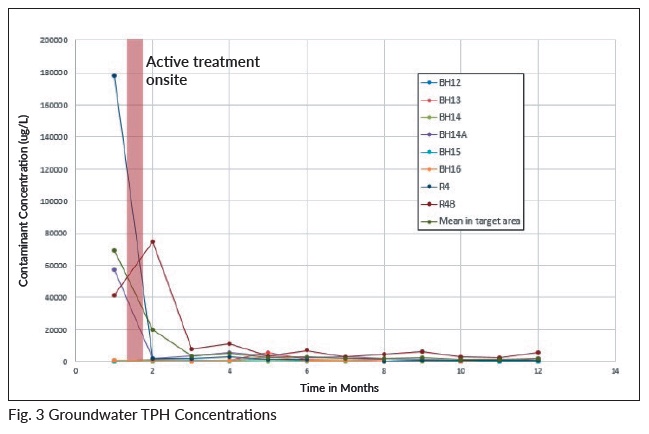
Conclusion
- Enhanced vacuum extraction avoided the installation of abstraction equipment onsite and reduced the treatment programme.
- A combination of approaches targeted each contaminant phase in order to provide the most efficient technique for each level of contamination, from LNAPL to low dissolved phase.
- A rapid and dramatic reduction in the contaminant concentrations was achieved.
- Low concentrations were maintained through the targeting of sources of rebound via desorption and back-diffusion.
Redevelopment of former gas works unlocked by combining technologies
Integrated remediation strategy provides rapid and cost-effective clean up
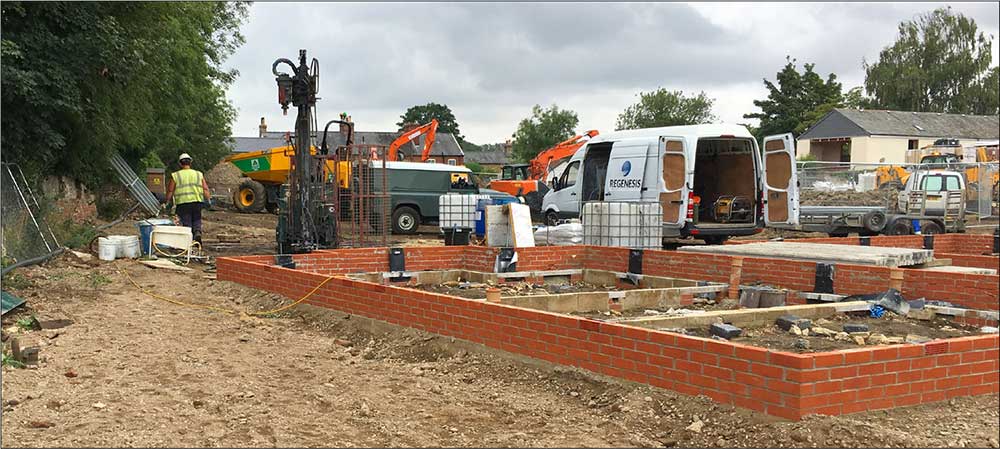
- During the construction of multiple residential dwelling it became apparent that a historical gas works had previously occupied the site.
- A targeted site investigation needed to be completed quickly to identify the areas requiring remedial action, enabling construction to continue in plots outside of the plume.
- A combined remedial strategy was required to address soil, LNAPL, DNAPL and dissolved phase contamination.
- The implementation of the treatment had to be completed around partially completed housing and live underground services.
- The remedial works had to be completed quickly in a manner as to not impact the build program.
- The strategy needed to provide appropriate protection to both human health and controlled waters.
- The need to respond and act quickly required excellent communication and good working relationships to be established between the consultant, stakeholders, regulators and multiple specialist remediation contractors and suppliers.
4m 44s reading time
Remedial Approach
A wide range of remediation technologies were deployed sequentially and in parallel to provide the most rapid and cost effective clean up:
- Ex situ bio-piling of hydrocarbon impacted soils
- LNAPL skimming
- Pump and treat (P&T) of dissolved phase contamination
- DNAPL pumping and settlement/collection
- Enhanced abstraction of contaminant mass using PetroCleanze
- In Situ chemical oxidation (ISCO) using RegenOx, which is compatible with footings and services already in place
- Accelerated aerobic natural attenuation using ORC Advanced slurry
- Accelerated aerobic natural attenuation using a pelletised oxygen-release compound (ORC Advanced) placed in the backfill
- PlumeStop Liquid Activated Carbon injection to install a subsurface activated carbon filter to adsorb and biologically degrade dissolved phase contamination
- Gas vapour membrane installation
Ex situ treatment
The impacted materials within the unsaturated zones within Plume A and B were excavated and placed in a biopile for onsite treatment (Figure 1). Nutrients were added and the biopile was turned until remedial targets were achieved. The soils were then backfilled under the CL:AIRE Code of Practice. Prior to backfill with the remediated soils, ORC Advanced Pellets were added to the base of the excavation. This provided a source of dissolved oxygen for up to a year, stimulating the growth of an effective aerobic biomass and accelerating the degradation of the petroleum hydrocarbon contamination.
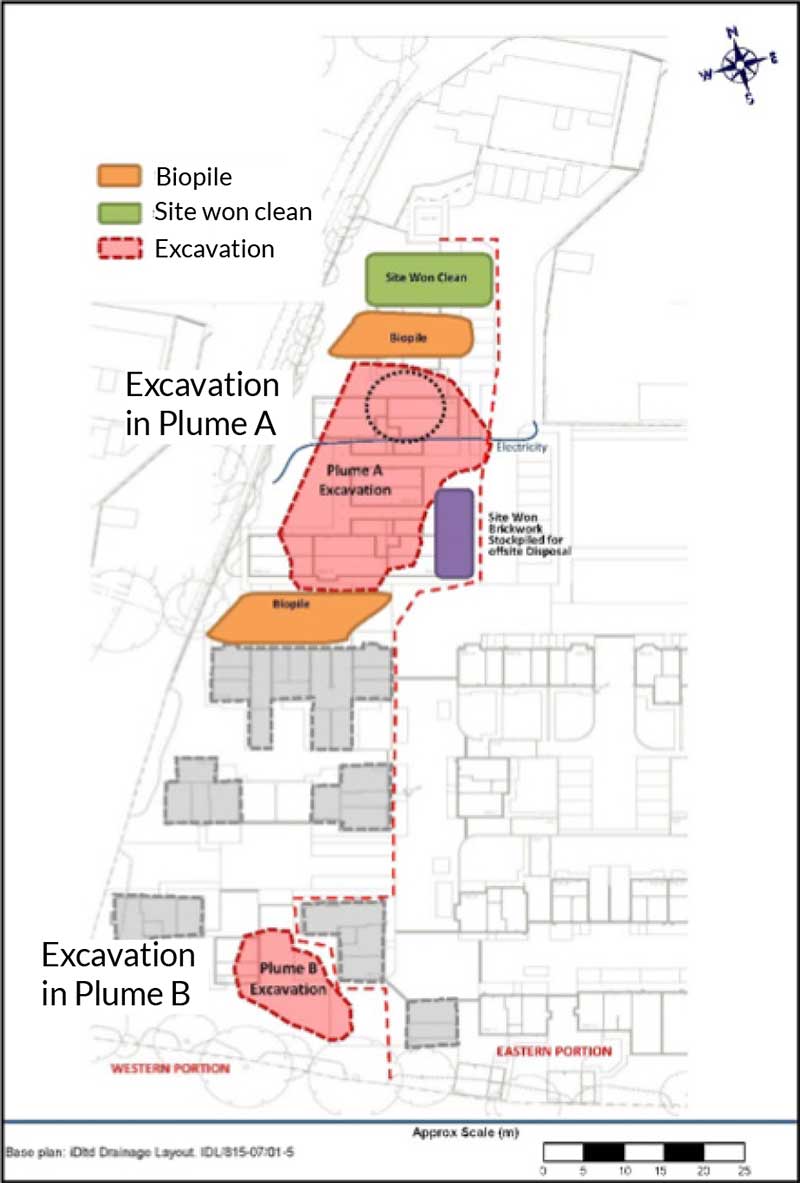
In Situ Treatment
The southern part of Plume A was made inaccessible by footings and services; here in-situ treatment was completed accommodate these obstructions without compromising treatment efficacy. Within Plume B, where high levels of contamination had been encountered (Figure 2), several in situ remedial actions were taken as appropriate to concentration, location and sequence in the strategy:
- REGENESIS injected PlumeStop, a micron-scale colloidal Liquid Activated Carbon substrate along the western margin of the site via direct push to protect the offsite surface water. PlumeStop creates a subsurface activated carbon filter which adsorbs the contaminant influx, which is then degraded by the microbial growth on the carbon biomatrix. Biological degradation was also accelerated through co-application of ORC Advanced and the presence of the pelletised ORC placed in the base of the excavation upgradient, providing a controlled release of oxygen.
- Where LNAPL and high dissolved phase concentrations were observed, a network of injection boreholes were installed by Rake Remediation/REGENESIS. Many of the wells were installed by removing suspended floors and lifting in a mini-rig to complete the drilling beneath partially constructed dwellings. Through these wells, multiple applications of RegenOx were completed. This in situ chemical oxidant was chosen as it was safe to handle on this busy site and would not corrode services installed at the site, nor would it be detrimental to the concrete footings.
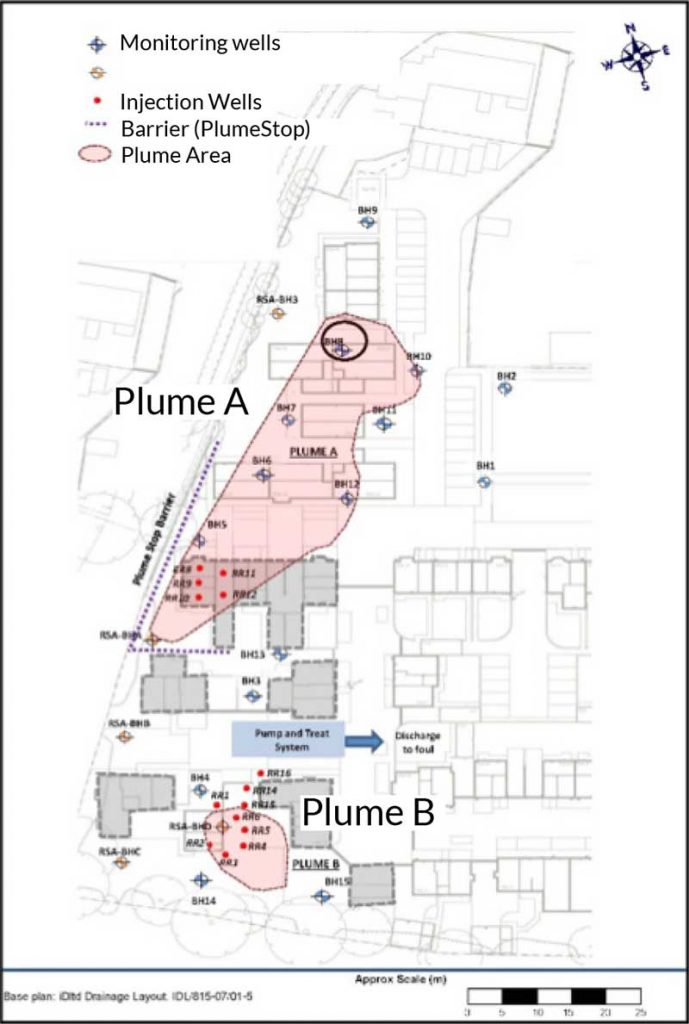

- Following the ISCO, ORC Advanced slurry was injected to enhance the natural attenuation (ENA) of the residual dissolved phase contamination to low levels.
- In Plume B, high levels of contamination in the form of both L- and DNAPL were encountered. This was removed using a P&T system augmented with PetroCleanze, an inorganic surfactant that uses a high pH, carbonates, silicates and partial oxidation to remove contaminants from soils. The PetroCleanze was injected to produce a temporary desorption event, which once observed, allowed the P&T system to be switched back for a short period to remove the contamination. This process was repeated three times to maximise the efficacy of the P&T and shorten the treatment programme.
- Once the NAPL was removed, multiple rounds of RegenOx were completed, followed by ORC Advanced via injection through wells.
- Long term groundwater monitoring programme was put in place to monitor the effectiveness of the clean-up.
Results
The following graphs (Figures 7 and 8) show the variations in concentrations for selected priority contaminants of concern over the monitoring period for Plume A and B. These show a marked reduction in the hydrocarbon dissolved phase concentrations over time, with compliance achieved with the remedial criteria.
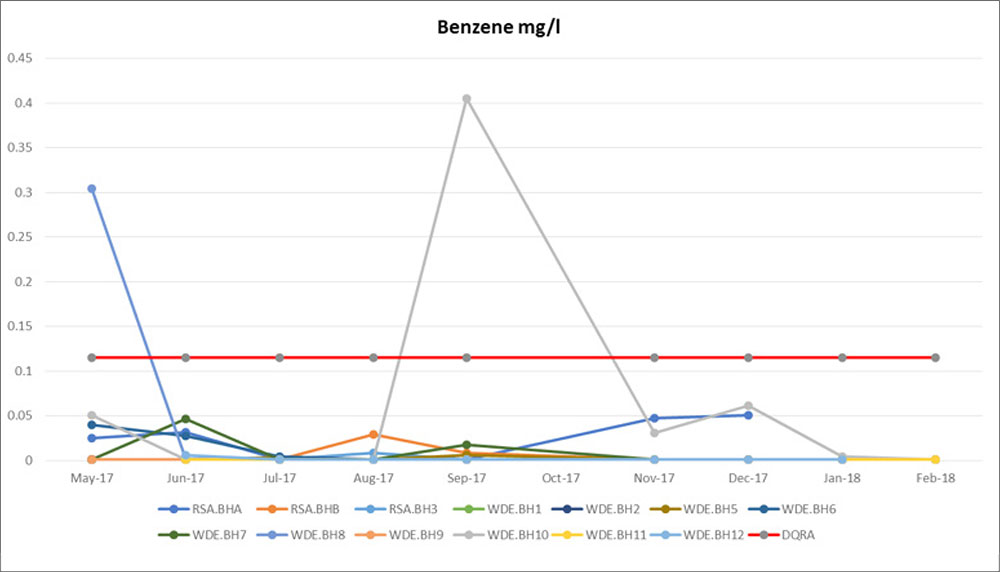
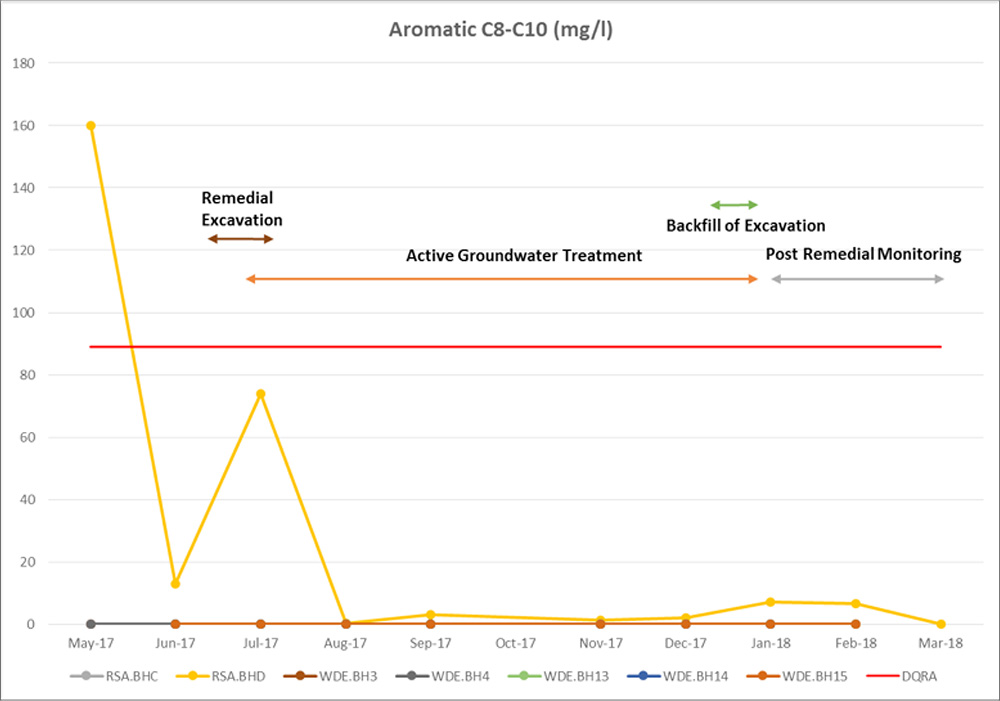
Conclusion
Complimentary remedial technologies were combined successfully to achieve:
- Contaminant mass reduction to below remedial targets in the soil and groundwater within 6 months.
- Protection of onsite and offsite receptors.
- Written confirmation by the Environment Agency that they ‘agree with (the reports’) conclusions’ and that ‘development may proceed’.
- Remediation completed on a tight budget – as remediation had not been foreseen by the developer.
- Ex-Situ remediation of soils and their reuse on site under the CL:AIRE CoP avoided offsite disposal of ~800m3 to landfill.
- In Situ enhancement of the P&T system, minimising the time, cost and volume of abstraction required.
- By combining the technologies intelligently, both simultaneously and sequentially, the programme length was minimised – allowing construction to continue within only 6 months.
Combined Remedy Chosen for FDEP Innovative Technologies Program
Large Dilute BTEX Plume Succesfully Treated To Meet Concentration Milestones
 A former gas station site in Taylor County Florida had undergone prior remedial efforts over the years. The Florida Department of Environmental Protection (FDEP), through its Innovative Technologies Program, engaged the environmental consulting firm, Advanced Environmental Technologies LLC (AET) to design an alternative combined remedial approach employing PlumeStop®, RegenOx® and ORC Advanced®, to sorb, degrade, and destroy the existing petroleum contaminant plume. Prior to full-scale implementation, treatment of this site began with a thorough Design Verification Testing (DVT).
A former gas station site in Taylor County Florida had undergone prior remedial efforts over the years. The Florida Department of Environmental Protection (FDEP), through its Innovative Technologies Program, engaged the environmental consulting firm, Advanced Environmental Technologies LLC (AET) to design an alternative combined remedial approach employing PlumeStop®, RegenOx® and ORC Advanced®, to sorb, degrade, and destroy the existing petroleum contaminant plume. Prior to full-scale implementation, treatment of this site began with a thorough Design Verification Testing (DVT).
This case study features the following:
- An in situ combined remedy approach that was chosen as the most technically-feasible and cost-effective strategy in a competitive bid scenario for the Florida Department of Environmental Protection’s Innovative Technologies Program
- High level of site complexity – flowable fill layer present over the treatment area, difficult geology (i.e., clays and limestone), and close proximity to structures, utilities and a roadway
- Use of PlumeStop, RegenOx, and ORC Advanced to successfully address a large BTEX plume
RegenOx Application Quickly and Efficiently Lowered Diesel Range Organics (DRO) to Below ADEC Requirements
Project Highlights
- Two applications of RegenOx® reduced contaminants to a level below the Alaska Department of Environmental Conservation (ADEC) standards to protect against migration to groundwater
- Completed in 8 weeks, restoring agriculture viability
- Soil was safely and efficiently cleaned preventing fuel from contaminating a nearby sensitive receptor

Project Summary
A Hydaburg site in Alaska, owned by Alaska Power and Telephone, previously housed diesel fuel generators and is now being converted into a hydro-electric plant. The land was contaminated by a diesel fuel spill requiring remediation. Approximately 1,000 cubic yards of soil were impacted and the starting concentrations of DRO were approximately 1 500 ppm. The goal was to reduce concentrations to below the ADEC standard of 230 ppm.
Due to the cold weather encountered during this project and the sensitive infrastructure in the area, it was important that the technology work effectively in less than ideal conditions. Also, the technology could not be corrosive nor generate excess heat. RegenOx, produces minimal heat and pressure, is non-corrosive, and works well at any temperature above freezing making it ideal for this project. Additionally, RegenOx is a chemical oxidant which quickly and effectively destroys a range of contaminants-in this case, DRO. The soil was screened with a trommel and RegenOx was mixed in a cement truck before being sprayed onto the soil. RegenOx was applied twice, with the applications spaced a week apart. This site required 20 lbs of RegenOx per cubic yard, in total 20,000 lbs.
Technology Description
RegenOx is a percarbonate-based in situ chemical oxidation technology that rapidly destroys petroleum hydrocarbons and chlorinated contaminants through powerful chemical reactions. It directly oxidizes contaminants while a catalytic component generates oxidizing free radicals to destroy the target compounds.
Results
After two applications of RegenOx, the concentrations of DRO went from 1,500 ppm to below 125 ppm, satisfying the ADEC requirement of below 230 ppm, within 8 weeks. After the remediation treatment, the soil was spread out, grass was planted and is now growing at the Hydaburg site, attesting to the renewed health of the soil.
Integrated Remediation of a Petrol Filling Station, Middlesex, UK
Integrated remediation of a former petrol station using enhanced pump and treat, excavation application and barrier injection.Read More
Rapid, Effective Remediation of Free Product at an Active Rail Depot, UK
Augmented Pump and Treat, In Situ Chemical Oxidation (ISCO) and Enhanced Natural Attenuation (ENA) completed under rail lines by REGENESIS Remediation Services. Read More
Remediation of Chlorinated Hydrocarbons at Manufacturing Facility, UK
AECOM successfully applied a phased treatment train solution for chlorinated solvents under an operational manufacturing facility. After an initial Dual Phase Extraction (DPE) phase, REGENESIS and AECOM devised a remedial design based on the updated Conceptual Site Model including In Situ Chemical Oxidation (ISCO) using RegenOx®, and Enhanced Reductive Dechlorination (ERD) using HRC®, to treat the residual contamination in groundwater.
Read More
Treatment of a Diverse Range of Contaminants, Emilia Romagna, Italy
Treatment of a very low permeability geology with mixed contaminants at varying concentrations, using multiple application methods and a range of different REGENESIS products.Read More
Smear Zone Treatment at Former Factory in Madrid, Spain
At a former chemical works near Madrid, high soil and groundwater contamination had been observed at, and just below, groundwater level. In Situ Chemical Oxidation (ISCO) using RegenOx, was applied to target these and to avoid excavation into the saturated zone.Read More

 Americas
Americas Europe
Europe Français
Français Deutsch
Deutsch Italiano
Italiano Español
Español